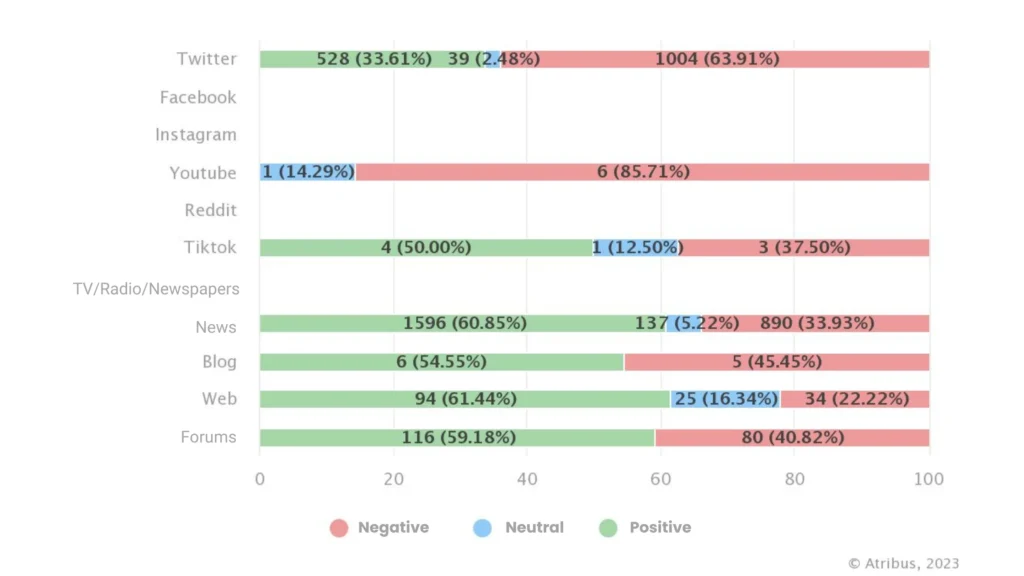Today we want to talk about how sentiment analysis works and why we should use it. But first we need to be clear about what sentiment analysis is.
What is sentiment analysis? Basically it is the process of determining the emotional tone behind a set of words. It is used to understand the attitudes, opinions and emotions expressed in online conversations. It is also known under the terminology opinion mining.

What are the uses of sentiment analysis?
The usefulness of sentiment analysis in social media monitoring is huge because it gives you the opportunity to get an overview of what public opinion is saying about specific topics. There are social media platform monitoring tools such as Atribus that make it easy for you and allow you to do sentiment analysis in real time.
It has been shown that changes in sentiment on social media platforms go hand in hand with changes in the stock market. There are many companies that include this process in their marketing strategies because of the great advantages it offers. It is a very useful tool to find out what your consumers think about your products or services, as well as what your competitors are offering.
It is no longer only companies that use this practice for their market research, but political parties also make use of it. With sentiment analysis it is possible to measure the public’s perception of an electoral campaign or a political proposal of any kind, as well as to know the population’s opinion about a political candidacy.
Making use of this type of analysis makes it possible to react to generalized opinions in the most optimal way possible. A clear example is that of Expedia Canada, which detected a large number of negative comments about the soundtrack used in an advertisement. Thanks to social media, it was identified that the vast majority of users agreed that the music was very irritating after several reproductions. The solution that the brand decided to adopt was to create a new version of the advert by crushing the offending violin.
Interpretation of social data
It should be clear from the outset that sentiment analysis is not a perfect practice. This is because human language is complex for a machine, as it has to be taught to analyze the nuances of grammar, ironies and even misspellings that often occur in social media comments.
For this reason, it is essential to teach the machine to contextualize textual language, so that it can correctly analyze both positive and negative sentiments, even when playing with sarcastic tone.
How we do sentiment analysis with Atribus
As we have just explained, human language is complex and is constantly changing and growing every day. At Atribus we use rules to make our software able to better understand the ways in which the context and tonality of conversations can affect sentiment.
Basically, we collect all mentions – words and phrases – that carry negative and positive sentiment and put in place the necessary rules so that our tool is aware that context can influence the tonality of content. In addition, we have a more detailed sentiment analysis that identifies each of the emotions observed in online conversations.

To have more control over your brand, our tool analyzes the percentage of positive and negative sentiment and groups it by online and offline platforms. In this way, companies can check in real time whether the strategies they are following in each of the social media are working as expected or not.

What will the future of sentiment analysis look like?
Without falling into the complex of the crystal ball that predicts the future, it is true that we would like to expose the existing general assumption about sentiment analysis. This is that sentiment analysis must go beyond the basic positive and negative scale, since there are so many different sentiments that it is difficult to include them in a single yardstick. Likewise, this type of analysis will grow and encompass a new spectrum of emotions in textual language.
Given this fact, many companies will decide to include sentiment analysis in their marketing strategies and the proliferation of artificial intelligence tools to help them in their decision making. Because if anything will become clear in the coming years, it is the wide range of information that this process offers to brands, so efforts will focus on how to make the extracted data interpretable and actionable.




